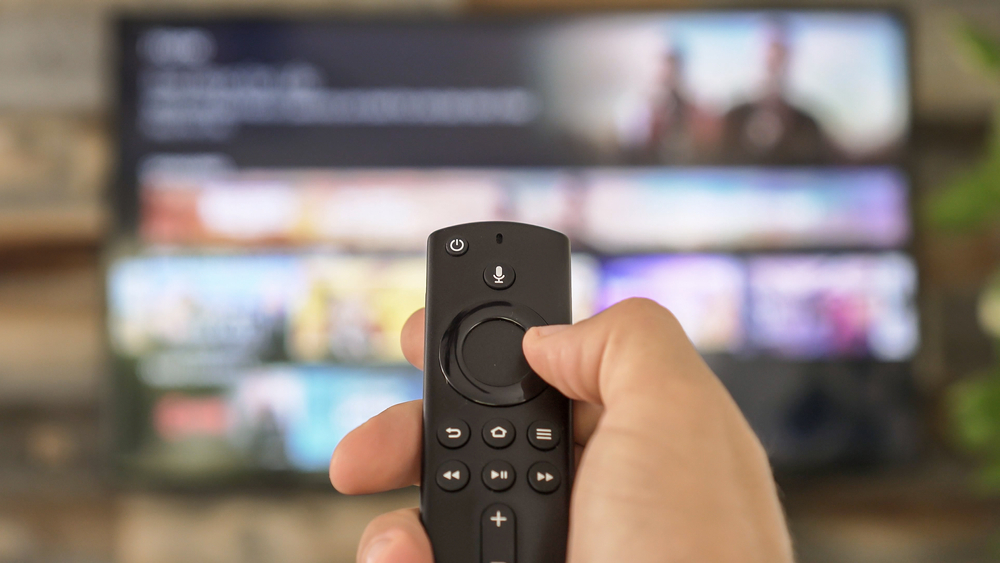As you read this, likely on a digital device, you're interacting with the product environment, the collection of products and services consumers choose to use or not use on a day-to-day basis. Over the last few decades, technology has drastically transformed the product environment and, subsequently, how we live our lives. Artificial intelligence is only throwing gasoline on that fire.
Nowadays, people spend hours interacting with technology, a giant sector of the product environment. The average person spends about four hours on their smartphone, a spike in use attributable to the endless scrolling opportunities on social media apps. Those apps create easy solutions to garden-variety chores, from ordering food, to hailing a ride, to getting goods and groceries delivered.
With such convenience at our fingertips comes a messy health conundrum, says Sara Singer, PhD, a professor of health policy and medicine who studies the human effects of the product environment. As technology encourages 24-7 digital connectivity, there's a coinciding rise in unhealthy behaviors: poor sleep, poor nutrition, lack of exercise, less outdoor time and social isolation. The problem is, there's no good way to measure those connections; worse yet, there's no real mechanism to combat the unhealthy habits. Singer hopes to change that.
"To make the product environment have a more positive impact on health, we have to better understand its impact through direct measurements and then we need to change incentives so that businesses own the impact of their products and services," Singer said. She recently authored a perspective piece with colleague Stephen Downs, who cofounded Building H, a nonprofit organization whose goal is to define the product environment and understand its impacts. Singer serves as an advisor to Building H.
Singer and others have created a ranking system they hope can quantify how certain products and services affect human health. Their ultimate goal: Company leaders use such a tool to guide decisions regarding product design and then create products that are optimized for positive health impacts.
The push and pull of products
Over the past five years, Singer and others have observed a stark trend: The rise in chronic health conditions in the United States parallels major shifts in consumer behavior, such as increases in screen use and sitting time. This, in large part, according to Singer, is thanks to the modernization of technology (through apps and other conveniences like delivery services). It has encouraged an increase in behaviors that lead to chronic conditions such as heart disease and diabetes.
"When measuring health broadly, we focus on behaviors that evidence suggests are important to a healthy lifestyle. Are you eating right? Are you sleeping well? Are you making sure you're not socially isolated? Are you getting outside and exercising?" Singer said. "Products and services that we interact with every day can directly impact these behaviors."
Sometimes for the better, sometimes for the worse. Take the streaming platforms that automatically queue up the next episode, encouraging sedentary behavior and discouraging physical activity, according to Singer.
"Streaming services are fabulous vehicles for entertainment. They could also be great for social interaction and exercise and even for promoting healthy eating, if they prioritized that," Singer said. "But mostly, those services are designed to hold consumers' attention -- to keep people streaming -- which has all the negative consequences for behaviors. Sitting for long stretches, social isolation, snacking."
"To keep people streaming ... has all the negative consequences for behaviors. Sitting for long stretches, social isolation, snacking."
Sara Singer
Singer also worries about the impact that new technologies such as artificial intelligence and virtual reality will have on the product environment and consumer decision-making. The likely outcome? "Further evolution of the product environment, which, if history is a guide, will be optimized for comfort and convenience, without regard to, and often at the expense of, health," the authors wrote in the perspective piece. That's why it's so important to create and instate basic checks and balances to the product environment now, before AI and other technological advances muddy the waters further.
In the absence of broad regulation or accountability, it comes down to individual choices to combat unhealthy behaviors. Singer, for instance, says she prioritizes non-product-oriented choices such as socializing with her friends, riding her bike and cooking at home.
Keeping business accountable
For things to change, businesses need to be held accountable for what they provide to consumers, Singer said, and to achieve that there must be specific measures for a product's impact on health. It's something that eludes researchers. "The idea is to identify and reward organizations that are trying their best to promote healthy behavior and encourage those doing relatively poorly to make changes," she said.

Bodies that oversee product regulations, such as the Food and Drug Administration and the Consumer Products Safety Commission, focus on safety issues associated with the use of products -- exposure to toxins, for example, or the risk of injury or death -- as opposed to possible behavioral impact.
Singer and others hope the ranking system they developed will help businesses tailor their outputs to more positively impact people.
The system, called the Building H index, currently ranks companies in four industries -- housing, transportation, entertainment and food -- based on how their products and services impact the health of their consumers. To develop the index, Singer and colleagues first conducted research on a variety of products such as video games and meal kit services, then determined how they influence five health behaviors: eating, sleeping, physical activity, social engagement and time spent outdoors.
Based on this information, they created a detailed profile of each product. They also recruited experts with health backgrounds to score each product's influence on each health behavior on a scale from +3 to -3. They added the average scores for each behavior and transformed the scores to a 0 to 100 scale. Singer and Downs then combined all of this information to rank all products in one big list.
"This methodology needs to get much better before it can be used to inform product choices -- there are limitations," Singer said. But she also believes that company leaders can be shown the long-term benefit of factoring in the health of their customers and be encouraged to build that into product design.
"The idea isn't to punish anyone but instead to reward good behavior," she said.
Photo: RightFramePhotoVideo





